Scientists keep finding new details about sharks in U.S. waters and some of it changes how we see them completely.

Sharks are not just deep-ocean mysteries anymore. Many species swim surprisingly close to U.S. beaches, rivers, and estuaries. Some hang out near Florida sandbars, others in chilly New England waters, and a few even push into freshwater systems like the Mississippi River. With more research happening along American coastlines, these species are showing behaviors and travel patterns few expected. It turns out, our waters are way more crowded and interesting than most people realize.
1. Bull sharks push into freshwater without hesitation.

Bull sharks are one of the only sharks that regularly travel up freshwater rivers, as reported by the National Oceanic and Atmospheric Administration. They have been found hundreds of miles inland in places like the Mississippi and Illinois rivers. Their unique ability to regulate internal salt levels allows them to thrive where most sharks would not survive.
These sharks are apex predators and do not need ocean tides to hunt effectively. Seeing them near populated inland waterways can be shocking, but their presence often signals a healthy river ecosystem. The adaptability of bull sharks makes them one of the most unpredictable species in U.S. waters.
2. Greenland sharks creep far south of what people expect.

As stated by Smithsonian researchers, Greenland sharks—normally Arctic dwellers—have been recorded off the New England coast. They are extremely slow-moving, live longer than most mammals, and can weigh more than a ton. Sightings this far south hint at shifting ocean patterns and changing ecosystems.
These sharks have been aged at over 270 years old, making them among the longest-living vertebrates on Earth. Their sluggish lifestyle and deepwater habits keep them largely out of view, yet these occasional southern appearances spark curiosity about what warming waters might be doing to long-established migratory routes.
3. Lemon sharks form tight social networks.
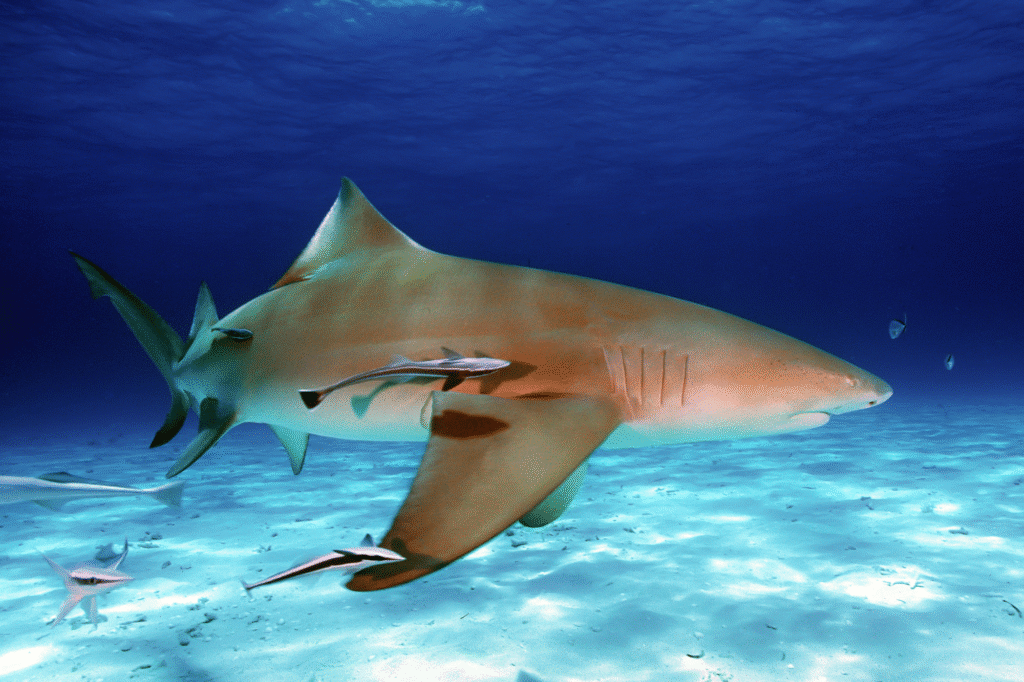
Lemon sharks off Florida and the Bahamas actually form long-lasting social bonds, choosing specific sharks to associate with rather than interacting randomly. This kind of behavior is rare in shark species, according to a study published in the Journal of Animal Ecology.
It changes how researchers understand shark intelligence and community. These social patterns can influence mating, hunting strategies, and even territorial behavior near U.S. coastlines. For humans, it means shark populations may be more stable and structured than previously thought, impacting conservation efforts in busy tourist zones.
4. Hammerheads cruise shallow bays like they own them.

Scalloped hammerheads regularly roam Gulf Coast bays and estuaries, sometimes in large schools. Their unusual head shape improves navigation and hunting, letting them sweep shallow flats for stingrays and schooling fish with ease.
These sharks often keep to warm, calm waters, which puts them surprisingly close to human recreation areas. That proximity gives researchers insight into how predators adapt to heavily trafficked waterways. People kayaking or fishing often have no idea hammerheads might be passing right underneath.
5. Shortfin makos turn speed into survival.
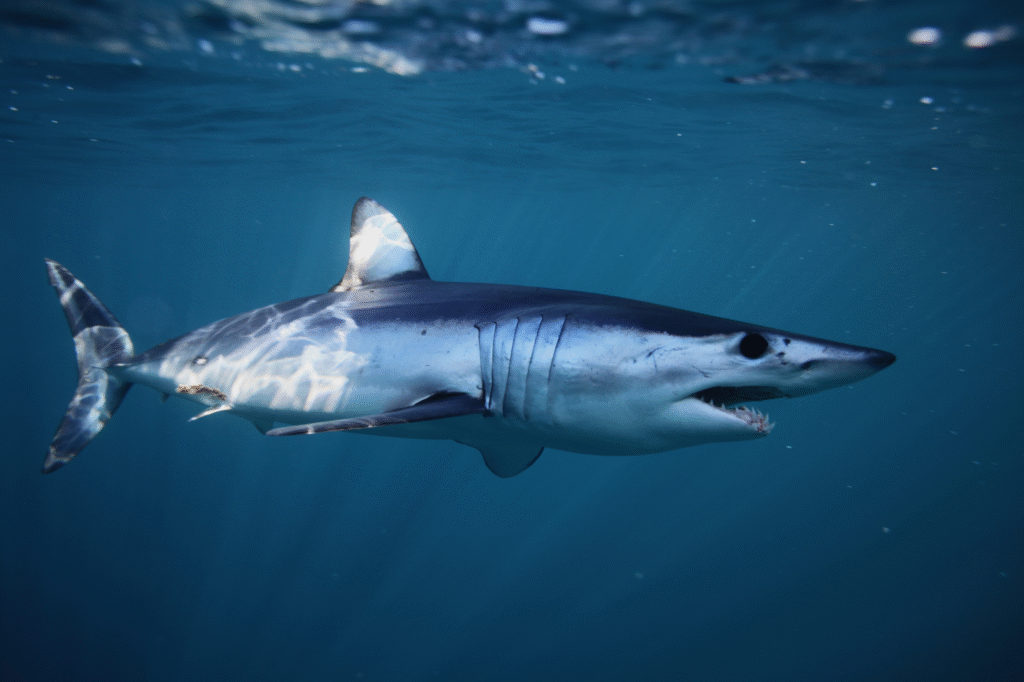
Makos are built for speed, reaching bursts of more than 40 mph, which helps them chase fast-moving prey like tuna and swordfish. These sharks are often found off California and along the East Coast in offshore waters.
Their strength and agility make them highly prized in sport fishing, but their population numbers are dropping, leading to increased protection efforts. Understanding how these predators move through American waters is critical for ensuring they remain a part of the marine ecosystem.
6. Sand tiger sharks hang out in eerie shipwreck cities.

The East Coast is littered with shipwrecks, and sand tiger sharks have made many of them permanent homes. They float motionless with their mouths slightly open, looking intimidating but usually staying calm and uninterested in humans.
These sharks use wrecks as both hunting grounds and safe places to rest or breed. For divers, seeing them in these underwater “ghost towns” is a surreal experience, proving just how adaptive sharks can be to human-altered landscapes.
7. Thresher sharks whip tails like weapons.

Thresher sharks roam both Atlantic and Pacific U.S. waters, famous for their impossibly long tails that they whip to stun schools of fish. This unique hunting technique has earned them a legendary status among shark enthusiasts.
These tails make them exceptional hunters and allow them to tackle larger prey than similar-sized species. Despite their fierce appearance, threshers are often shy and avoid direct contact with humans.
8. Blacktip sharks stage massive seasonal migrations.
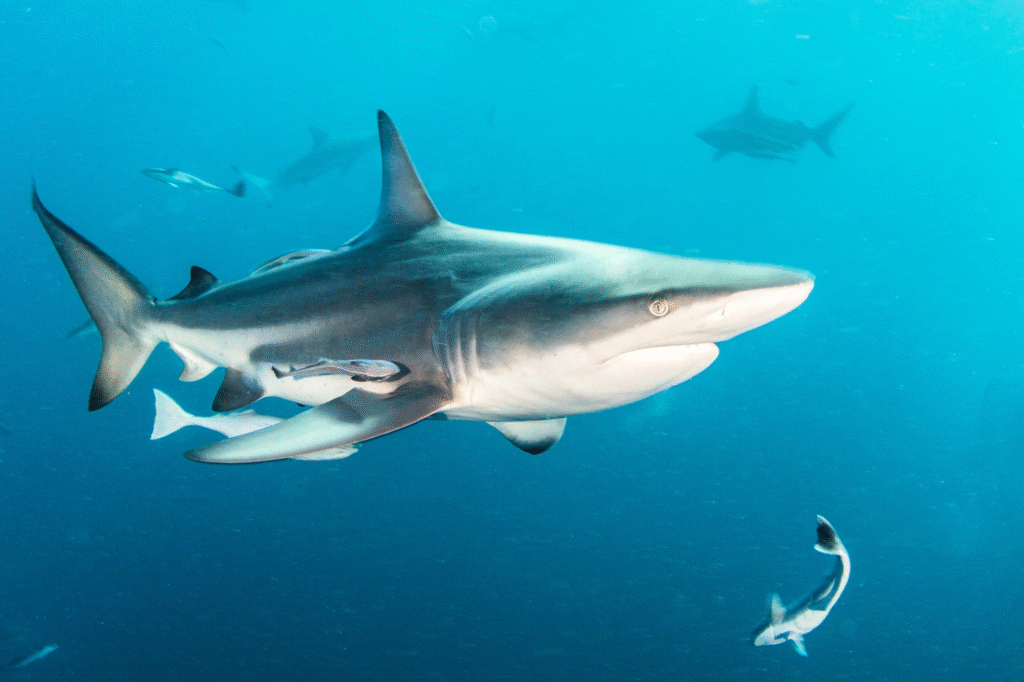
Every winter, thousands of blacktip sharks move along Florida’s Atlantic coast, often hugging the beaches close enough to be seen from shore. Their synchronized movements look like living rivers of fins when viewed from above.
These migrations bring them into areas frequented by swimmers and surfers, though blacktip sharks are not generally aggressive. Scientists track these movements to better understand how sharks respond to temperature changes and food availability.
9. Great whites stake out New England summers.

Cape Cod has become a summer hotspot for great white sharks due to booming seal populations. These predators are spending more time near shore, which has led to changes in local beach safety and tourism practices.
This seasonal movement shows how sharks can shift habitats quickly when food sources change. For researchers, it is a chance to study one of the ocean’s top predators in an entirely different context than deep-ocean environments.
10. Nurse sharks embrace the chill life.
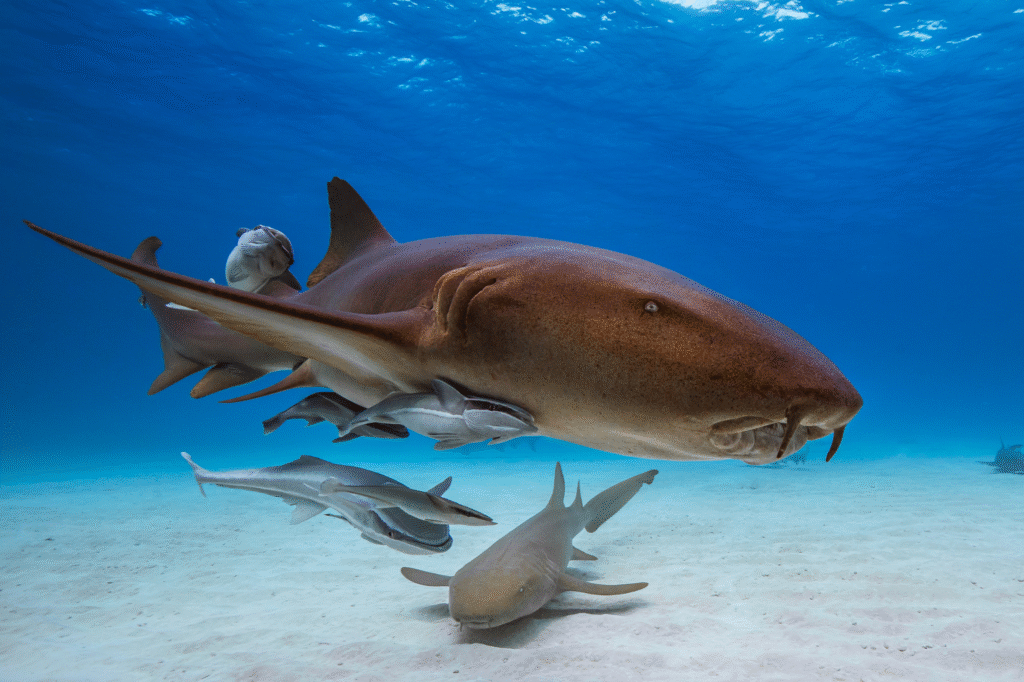
Nurse sharks often lounge along the seafloor in the Keys and Southeast U.S., rarely in a hurry to move anywhere. Their slow behavior and benthic feeding style make them look almost lazy compared to their open-water relatives.
These sharks have become popular in eco-tourism because they tolerate divers well and typically keep calm around humans. Their gentle nature contrasts sharply with the traditional “fearsome shark” stereotype.
11. Tiger sharks scavenge with zero shame.
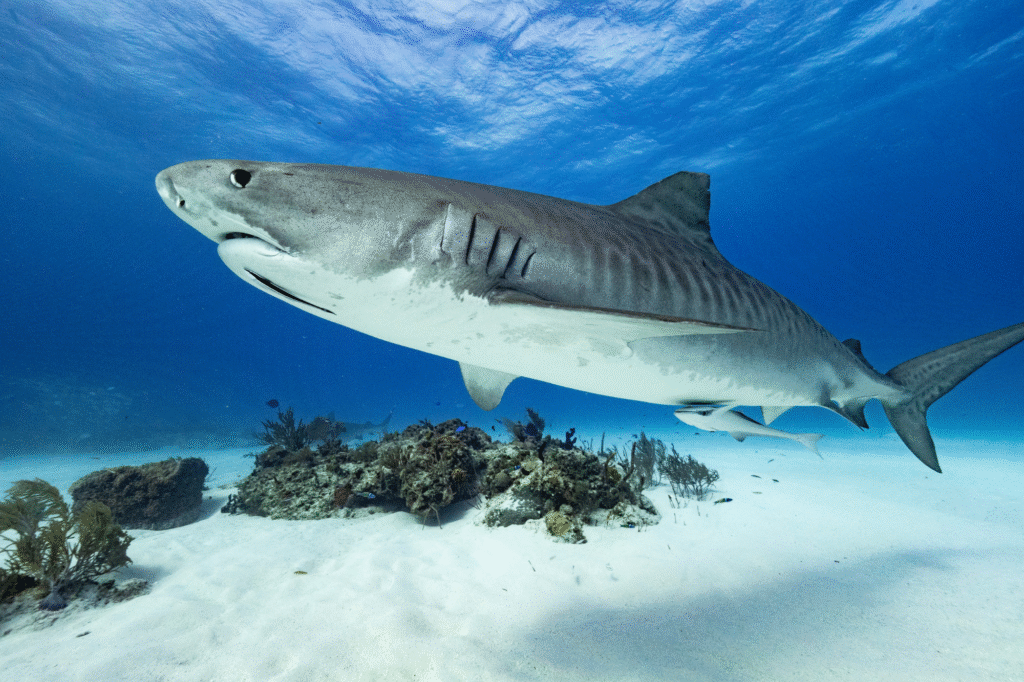
Tiger sharks patrol U.S. tropical and subtropical waters, known for eating almost anything, including trash, sea turtles, and other sharks. Their broad diets make them essential for cleaning up marine ecosystems.
Because they do not rely on a single food source, tiger sharks can adapt to changing ecosystems faster than many other species. That flexibility keeps them thriving in environments where other sharks might struggle.
12. Bonnetheads break the rules by eating plants.
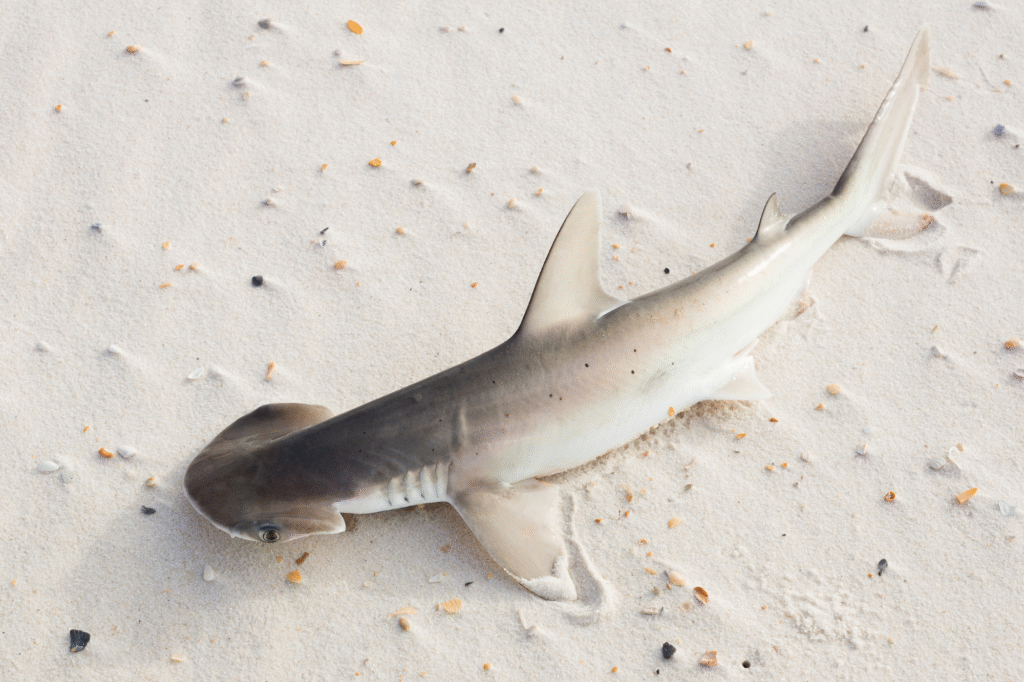
Bonnethead sharks, close relatives of hammerheads, have a diet that includes significant amounts of seagrass—something scientists long thought sharks could not digest. This discovery changed how people understand shark diets and behavior.
They frequent shallow coastal waters, especially in the Gulf of Mexico, which makes them common sightings for waders and snorkelers. This unusual diet helps maintain seagrass health, proving even predators play unexpected roles in ecosystems.
13. Whale sharks bring gentle giants to our shores.

Occasionally spotted in the Gulf and off southern California, whale sharks are the largest fish in the world but filter-feed on plankton instead of hunting large prey. Their calm demeanor makes them a favorite among divers.
These gentle giants remind people that not every shark encounter has to be high drama. Seeing one in American waters is considered rare and often becomes a once-in-a-lifetime experience for anyone lucky enough to witness it.
